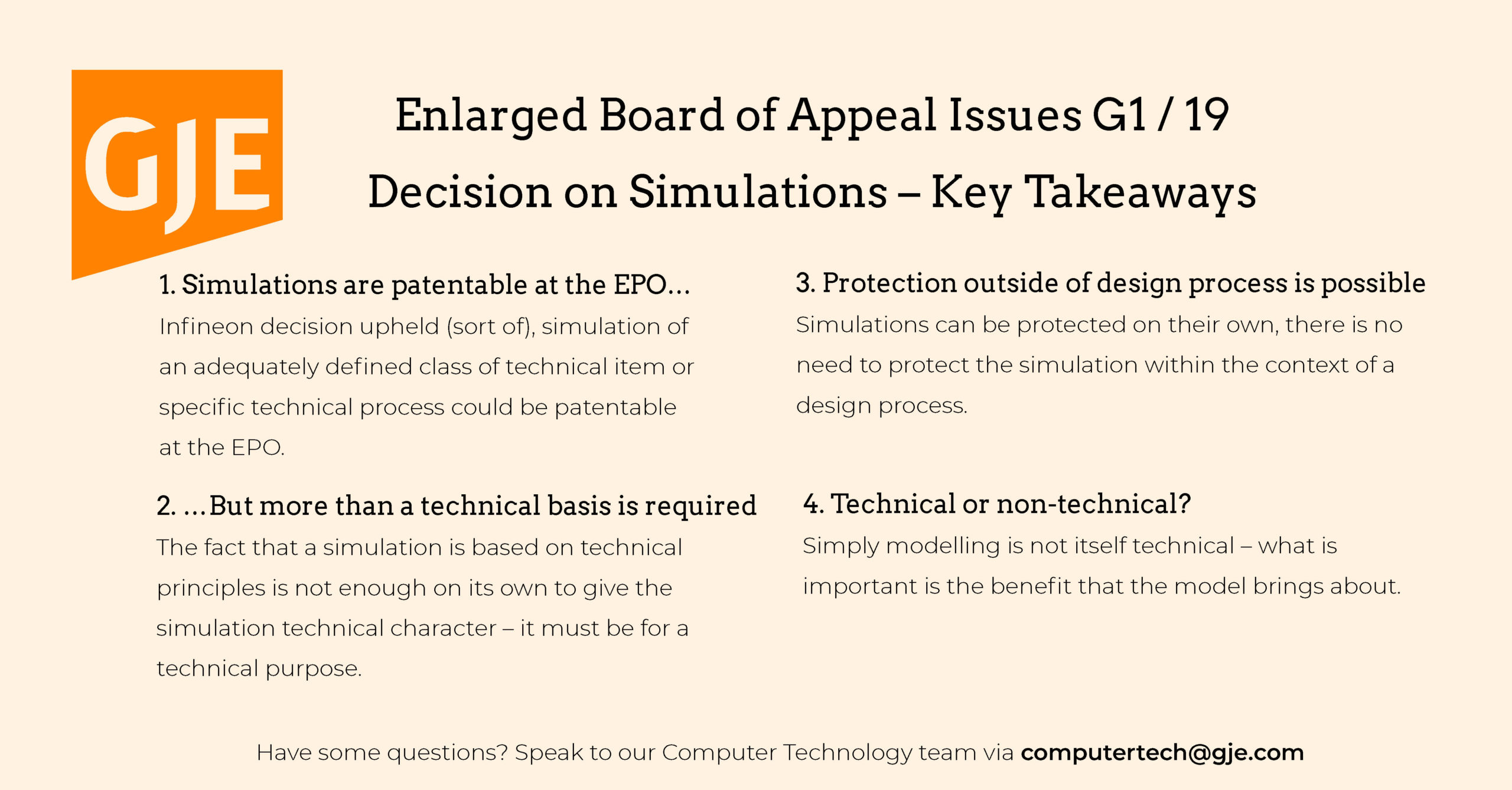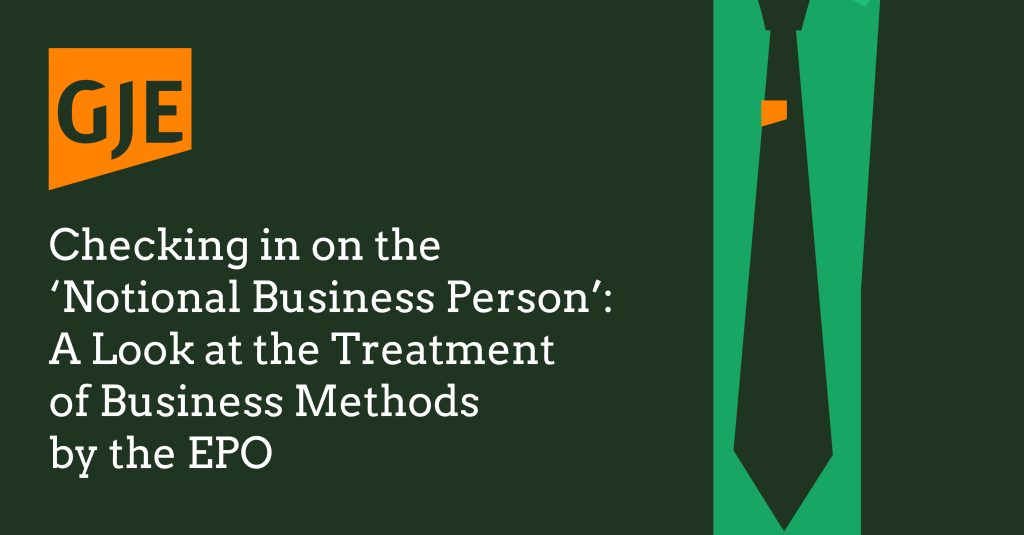
GJE’s computer technology team have put together a comprehensive collection of content designed to equip your business with insight into simulations and the role intellectual property has in its development.

Computer Simulations: Strategy for Patents
Michael Vallance and Kate Voller have created a practical guide to help you understand whether your computer simulation might be patentable in Europe in view of the recent developments at the EPO.
Whether you work as in-house counsel or in overseas private practice, you should find the hints and tips for prosecuting simulations applications useful, regardless of your jurisdiction or field. Read here.
The Law of Unintended (or Intended) Consequences
Recent attempts to clarify the EPO’s approach to examining machine learning applications have arguably been missing an important factor… a body of case law on which to base the guidance. The section on AI and machine learning in the EPO guidelines for examination lists two narrow and specific cases in the classification section but no law relating to the broader principles.
Matthew Hoyles explores the impact of the legal developments on simulations on Machine Learning. Read here.
Patenting a Simulation at the European Patent Office – Some Key Points
Simulations are rife in the modern world. From the design of components for an aeroplane to the movement of people in a crowded space, simulation is finding highly diverse application across many technical fields.
Innovation in Simulations, from Robots to Wrinkles
The big news in the world of computer-implemented inventions was the long-awaited publication of the G1/19 decision, developing the law on patenting simulations in Europe.
In light of this decision, James Taylor explores a few of the different kinds of simulation inventions that have been patented in the past. Read here.
Does the latest simulations decision from the Enlarged Board in G1/19 move us closer to European harmonisation?
Does the latest simulations decision from the Enlarged Board in G1/19 move us closer to European harmonisation?
Matthew Hoyles explores why this might be the case following the landmark decision. Read here.
Has the patentability of computer simulations changed in Europe following the recent decision in G1/19?
On 10 March 2021, the Enlarged Board of Appeal at the EPO issued the long-anticipated decision G 1/19 concerning the patentability of computer simulations. Before this decision, the standard for determining patentability in this area was dictated by case law established by the lower courts of appeal at the EPO, and in particular the decision T 1227/05 (“Infineon”). In this article, Michael Vallance explores the extent to which this standard has now changed. Read here.
Simulating the EPC Guidelines after G1/19
As part of the fallout from the recent G1/19 decision, the Guidelines for Examination in the EPO will have to be updated to reflect the new law. Though there is a bit of a wait until the next update (the latest revisions just came into force on 1 March 2021), the 2022 revision cycle has already begun.
In this article, James Taylor looks at the existing EPC Guidelines related to simulations and comments on some of the removals, revisions, and additions that are expected to occur as a result of G1/19. This will be particularly helpful to practitioners trying to understand how G1/19 will apply in the short term. Read here.
Practical Claim Drafting Tips for Computer Implemented Inventions In View of G1/19
Whether you work as in-house counsel or in overseas private practice, you should find the hints and tips for drafting computer-implemented inventions useful, regardless of your jurisdiction or field. Read here.
Computer Simulations are Patentable — but which ones?
The European Patent Office has recently confirmed that computer simulations can be patentable (but not always). However, whether or not a simulation is likely to be patentable isn’t always straightforward and it is easy to get lost and frustrated by the nuances.
Kate Voller looks at some of the patentable and non-patentable examples provided in the recent G1/19 decision, which should provide some guidance as to the types of simulation that are allowable. Read here.
Changes in Simulations at the EPO: A Debrief
As the dust settles following the out-of-the-blue release of G1/19, Matthew Hoyles has put together notes and thoughts on what the decision will mean for applicants and practitioners — whether they are Europe-based or elsewhere. Read here.
Get in Touch
If you would like to know more about how our expertise in computer technology or other sectors can help your business, we welcome enquiries via computertech@gje.com.





